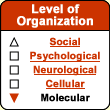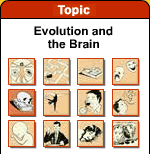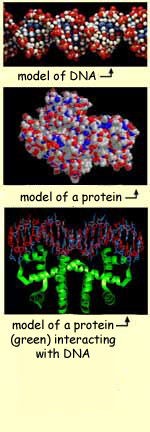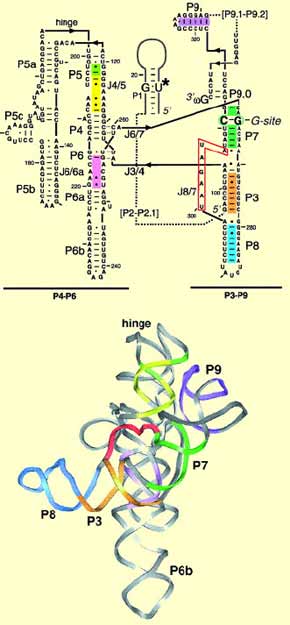|
|
|
|
 |
| Our
Evolutionary Inheritance |
 |
|
|
|


To explain how life
originated in the primordial soup that prevailed on Earth
shortly after it formed, many alternative hypotheses have
been proposed.
One is that the first molecules were brought to Earth by meteorites or
comets.
Another is that they may have appeared on inorganic surfaces in
the form of molecular proto-organisms that were immediately
capable of manufacturing their own components.
Still another is that the first forms of life developed
from viruses. Viruses are very simple, essential,
cell parasites. They have atypical molecular mechanisms that
might have originated very long ago and been tested during
the early stages of evolution but not retained in the prokaryotes
or eukaryotes we know today. |
|
|
Proteins are synthesized using information
contained in DNA. But DNA itself must be synthesized when a cell
reproduces, and this synthesis requires proteins, in particular
enzymatic proteins such as DNA polymerase.
For scientists who study the origins of life, this poses a serious
problem: DNA cannot have come first, because proteins are needed
to make it. But proteins cannot have come first either, because
information from DNA is needed to make them. To resolve this paradox,
scientists had to determine how DNA might have been synthesized
without enzymatic proteins, from the basic
building blocks of life.
In the early
1980s, Thomas Cech and Sydney Altman discovered that certain
forms of RNA could act as catalysts, just like proteins.
These special forms of RNA are now called ribozymes.
Ribozyme RNA molecules can play the roles of both DNA and proteins.
They can thus resolve the chicken-and-egg-like paradox that
scientists faced. On the basis of certain molecular markers,
several researchers have concluded that RNA probably appeared
on Earth before DNA. The problem of the origins of life has
thus become in part the problem of the origins of RNA, which
is still far from being solved.
In fact, the very notion of the first molecule may not have
any real meaning. Some mechanisms of protein synthesis simpler
than those we now know may have existed in the past and allowed
the appearance of primitive but effective forms of molecules
with catalytic or autocatalytic properties. |
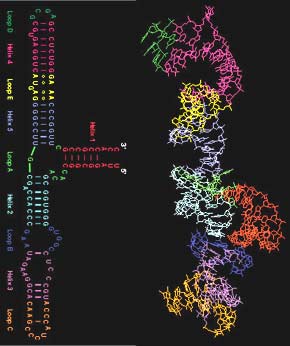 Structure of the 5S ribosomal RNA
subunit
Structure of the 5S ribosomal RNA
subunit
of Haloarcula marismortui.
Source: 5S Ribosomal RNA Database |
Likewise, any attempt at a precise definition
of life itself may well be unrealistic. Life in fact might be regarded
as appearing gradually in systems of increasing complexity. Thus,
a pebble is inert, but crystals grow, and clays may serve as matrices
that facilitate biochemical reactions. Proteins do the work of
cells, and viruses can reproduce. Protozoans are autonomous, and
the cells of metazoans are specialized and organized into tissues.
When we look only at the extremes on this continuum, or set excessively
arbitrary criteria for what constitutes life, we often find ourselves
confused and frustrated by contradictions of language. Perhaps
the best understanding of life that we can hope to achieve may
be limited to observing how matter behaves and how this behaviour
gradually reaches higher and higher levels of complexity.
In the late 1970s, a
microbiologist named Carl Woese discovered a third group
of organisms living on Earth: archaebacteria. Though
archaebacteria are prokaryotes,
they are no closer to conventional bacteria than to eukaryotes
on the universal genealogical tree. The archaebacteria group
comprises a very large number of organisms that live under
extreme temperature conditions. Some archaebacteria are found
in hot springs whose temperatures are close to the boiling
point of water. Many researchers have drawn a connection
between this observation and the fact that temperatures were
probably far higher on primitive Earth than they are on Earth
today.
For Woese, the discovery of archaebacteria meant that Darwin's
cherished doctrine of a common ancestor might need to be questioned.
According to Woese, there are at least three forms of primitive
cells from which all current life forms originated: primitive
prokaryotes, primitive eukaryotes and primitive archaebacteria,
all of which could trade genes with one another.
|
|
|



